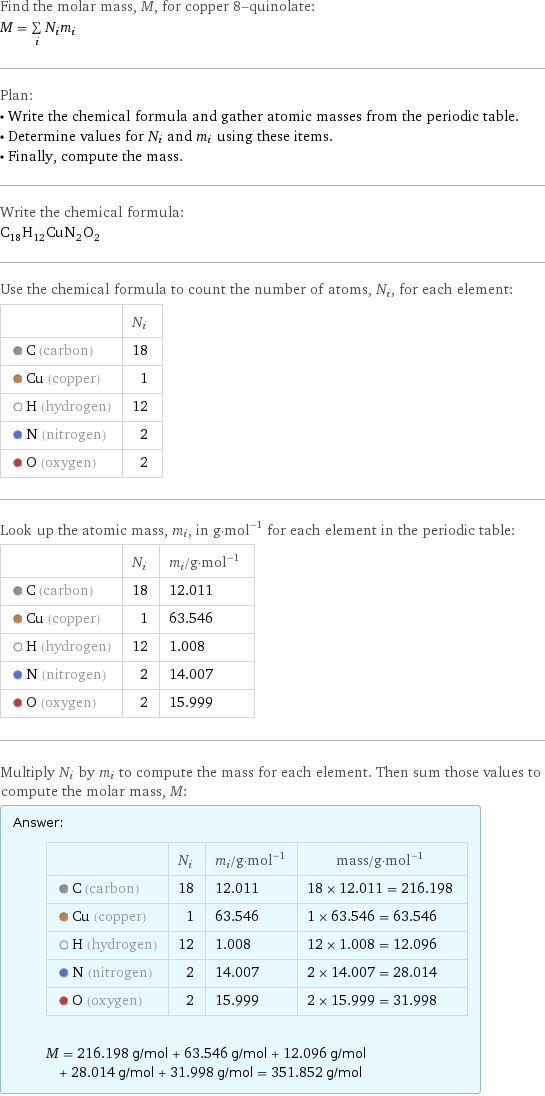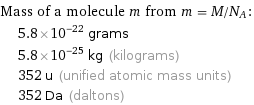Input interpretation

copper 8-quinolate | molar mass
Result

Find the molar mass, M, for copper 8-quinolate: M = sum _iN_im_i Plan: • Write the chemical formula and gather atomic masses from the periodic table. • Determine values for N_i and m_i using these items. • Finally, compute the mass. Write the chemical formula: C_18H_12CuN_2O_2 Use the chemical formula to count the number of atoms, N_i, for each element: | N_i C (carbon) | 18 Cu (copper) | 1 H (hydrogen) | 12 N (nitrogen) | 2 O (oxygen) | 2 Look up the atomic mass, m_i, in g·mol^(-1) for each element in the periodic table: | N_i | m_i/g·mol^(-1) C (carbon) | 18 | 12.011 Cu (copper) | 1 | 63.546 H (hydrogen) | 12 | 1.008 N (nitrogen) | 2 | 14.007 O (oxygen) | 2 | 15.999 Multiply N_i by m_i to compute the mass for each element. Then sum those values to compute the molar mass, M: Answer: | | | N_i | m_i/g·mol^(-1) | mass/g·mol^(-1) C (carbon) | 18 | 12.011 | 18 × 12.011 = 216.198 Cu (copper) | 1 | 63.546 | 1 × 63.546 = 63.546 H (hydrogen) | 12 | 1.008 | 12 × 1.008 = 12.096 N (nitrogen) | 2 | 14.007 | 2 × 14.007 = 28.014 O (oxygen) | 2 | 15.999 | 2 × 15.999 = 31.998 M = 216.198 g/mol + 63.546 g/mol + 12.096 g/mol + 28.014 g/mol + 31.998 g/mol = 351.852 g/mol
Unit conversion

0.35185 kg/mol (kilograms per mole)
Comparisons

≈ 0.49 × molar mass of fullerene ( ≈ 721 g/mol )

≈ 1.8 × molar mass of caffeine ( ≈ 194 g/mol )

≈ 6 × molar mass of sodium chloride ( ≈ 58 g/mol )
Corresponding quantities

Mass of a molecule m from m = M/N_A: | 5.8×10^-22 grams | 5.8×10^-25 kg (kilograms) | 352 u (unified atomic mass units) | 352 Da (daltons)

Relative molecular mass M_r from M_r = M_u/M: | 352